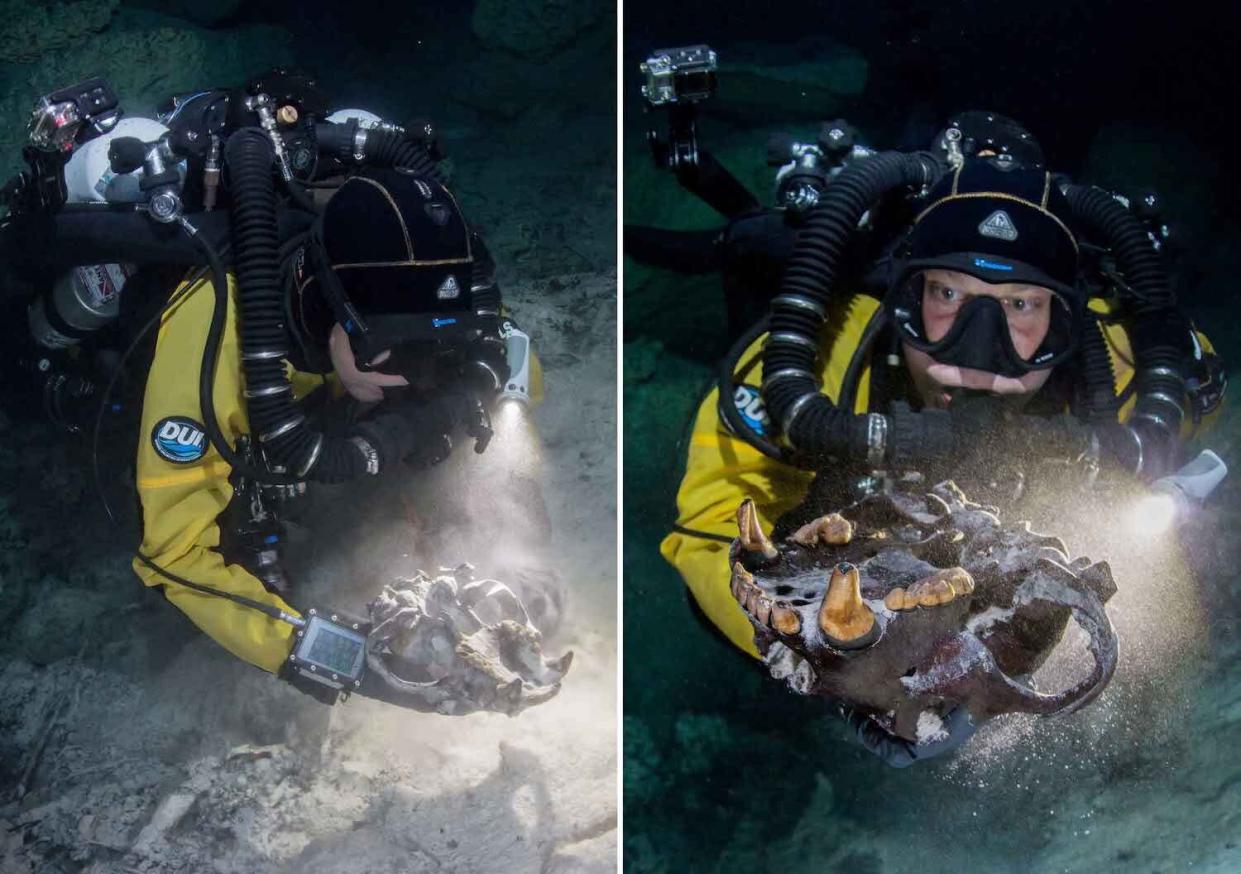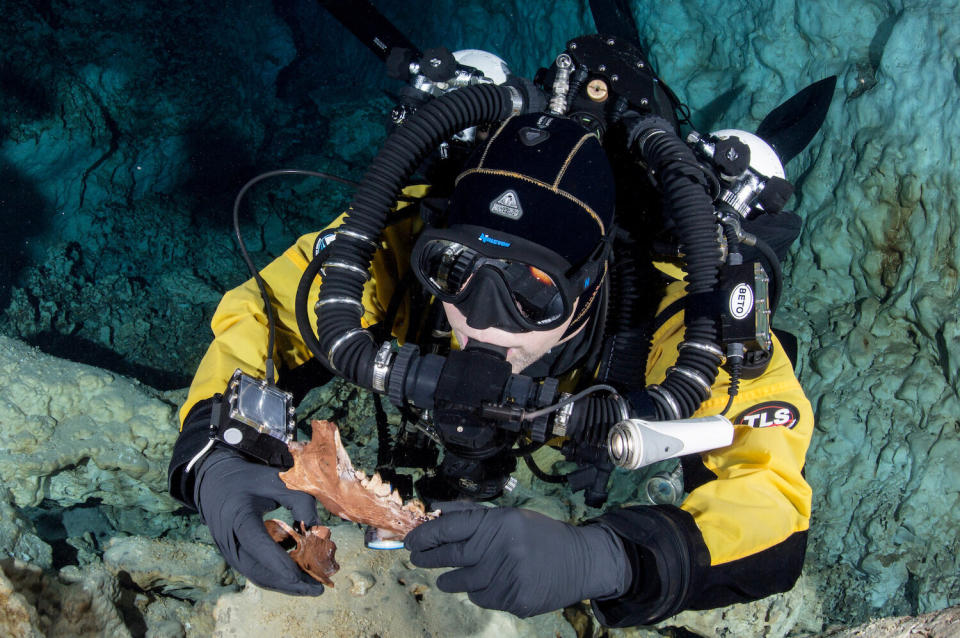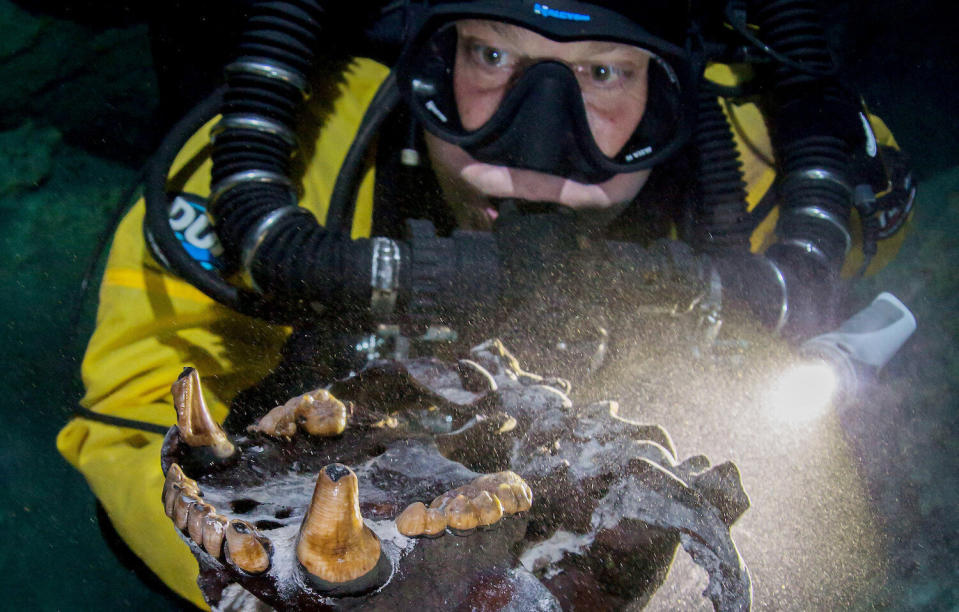Bones of Ice Age beasts that roamed Earth more than 13,000 years ago found in underwater cave

Bones of Ice Age beasts that roamed Earth more than 13,000 years ago have been found in an underwater cave in Mexico.
There were also two creatures previously unknown outside South America - the short-faced cave bear Arctotherium wingei and the giant wolf Protocyon troglodytes.
The prehistoric animals include giant sloths, sabre toothed cats and ancient elephants were found alongside the remains of a 15 year old girl named Naia - the most complete early human ever found in the Americas.
The animals lived 38,400 to 12,850 years ago.

The bones were found at the bottom of a 200 feet deep pit known as Hoyo Negro - Spanish for 'black hole' - on the Yucatan peninsula.
They reveal how humans and animals migrated between North and South America after the Isthmus of Panama connected the continents at the end of the last Ice Age.
Palaeontologist Dr Blaine Schubert, of East Tennessee State University, said: "We suggest landscape and ecological changes caused by latest Pleistocene glaciation supported an interchange pulse that included A. wingei, P. troglodytes and Homo sapiens."
The bones shed light on the strange world inhabited by Naia, who is believed to have taken a fatal fall after wandering into the cave system looking for fresh water.

Later, rising seas brought on by melting glaciers raised the water table hundreds of feet, flooding the caves and entombing the skeletons.
Mammals unearthed on the surface of the floor include multiple ground sloth species, including the newly named Nohochichak xibalbahkah.
There were also tapirs, sabre-tooth cats, cougars, elephant like gomphotheres, bears, primitive dogs - and the "relatively complete human skeleton" of Naia, he said.
Dr Schubert added: "In addition, bones and trackways of extinct fauna are known from the upper passages."
The team of cave divers first came across Hoyo Negro in 2007, and were stunned to find a massive water-filled chamber rife full of animal remains and the skeleton of Naia.
Read more
Dead people ‘will outnumber the living on Facebook within 50 years’
Drivers are being tricked into thinking a bird box is a speed camera
Teen robber who went on 24-hour crime spree with machete is jailed
Expeditions through the years have mapped at least 28 animal skeletons within the pit, some of which are extinct but others, like the puma and white-nosed coati, are still around today.
The first complete analysis of two of the animals - the cave bear Arctotherium wingei and the giant wolf Protocyon troglodytes - has now been carried out for the first time.
They expand the distribution of these predators to 1,250 miles (2,000 km) outside South America - where they were thought to have been confined.
Radiocarbon dating of protein from Arctotherium's teeth dated it to between 12,850 and 13,430 years old, reports the Royal Society journal Biology Letters.

 Yahoo News
Yahoo News 
